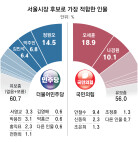Petrochemical Industry Suffering
Petrochemical Industry Suffering
Posted July. 11, 2005 03:20,
The domestic petrochemical industry has enjoyed an unprecedented boom over the past three years. However, those days seem to be at risk.
The industry faces the triple jeopardy of higher costs driven by high oil prices, skyrocketing supply in China and the Middle East, and dampened domestic consumption that shows no sign of reviving.
In particular, supply is projected to far outpace demand in the global petrochemicals market starting from the latter half of this year. The dim outlook has already sent export prices down, giving rise to concerns of a deteriorating profitability.
Analysts forecast, The trade surplus in petrochemicals accounts for 30 percent of the overall trade surplus of our country. Exports in the second half of the year will be hit pretty hard.
Excessive Supply Plus High Oil Prices-
Ironically, the current petrochemicals difficulties stem from last years boom. As the industry thrived in recent years, nations around the world competitively built up factories and increased plant operations, driving up supply.
Chinas SECCO built a factory with an annual capacity of 900,000 tons in March, followed by YBSs 600,000-ton factory in July. CNOOC plans to open its 800,000-ton factory in December. South Africas Sasol is expected to make 1 million tons of petrochemical products in Iran starting from September.
High oil prices have added to the major headache. Until last year, global demand far exceeded supply, making it possible for export prices to absorb the increased burden in costs caused by high oil prices. Now, the situation is no longer so and the industry has to take on the heavy burden coming from oil prices.
The average prices of six major synthetic resins declined 9.6 percent last month compared to the same month last year, from $1,116 to $1,009 per ton. The price has been falling for four months this year since March.
Until early this year, product prices were able to absorb 100 percent of the cost increase caused by high oil prices, and even 130 percent for ethylene. However, this year, products only absorb about 80 to 90 percent. I am concerned about the profitability of domestic petrochemical products, said Lee Eul-soo, a research fellow at Samsung Securities.
Oil Prices Affect Exports-
High oil prices deal a heavier blow to petrochemicals companies that produce ethylene, and other basic raw materials chemicals companies that make synthetic resins, than oil companies.
Among synthetic resins, widely used goods such as PVC and PP used in pipes or plastic bags are more heavily influenced than high-end goods such as ABS and PS, plastic materials for large household electrical appliances. Widely used goods have more producers; therefore markets for such goods are more competitive.
An overseas sales executive for a petrochemicals company lamented, Sluggish consumption made us turn to expanded exports but competition has become fiercer overseas, too. The situation is terrible. We dont have an answer, although we hold meetings everyday.
When petrochemicals exports are hit, so are the overall exports.
Petrochemicals are a vital part of our economy. Although it only accounts for six percent of the Korean manufacturing sector in terms of amount of production, its trade surplus is responsible for as much as 31 percent of the entire surplus. It has emerged as a potentially negative factor on exports in the second half of this year, said Jang Seok-in, head of major infrastructure industries office at KIET. He advised, The quality of petrochemicals is not vastly different between companies. The more goods you make, the better. Petrochemicals companies should become larger through massive mergers or move on to producing high value-added goods.
Chang-Won Kim changkim@donga.com





![“작년에 얼린 떡으로 떡국 No!”…냉동 떡 2달 지나면 버려야 [알쓸톡]](https://dimg.donga.com/c/138/175/90/1/wps/NEWS/IMAGE/2025/12/31/132975107.3.png)

